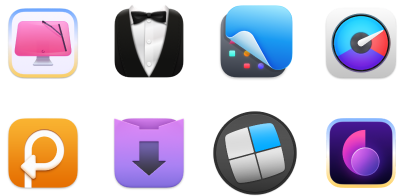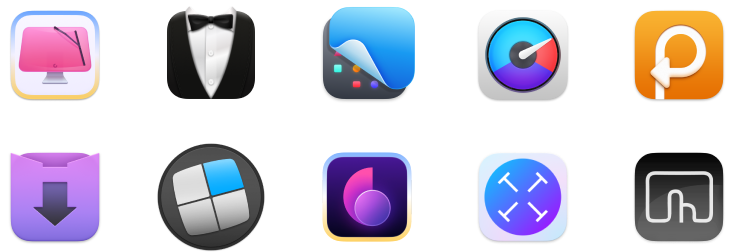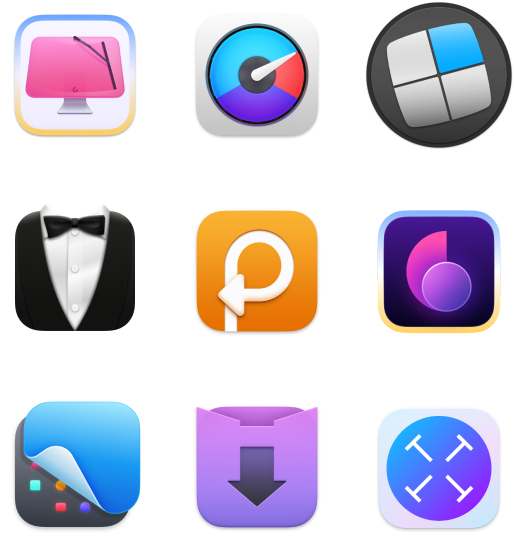How I check Apple charges on my account in 2025
- How to check Apple charges on your account
Open Settings on your iPhone or iPad > Tap your name > Media & Purchases > View Account > Purchase History. On a Mac, open the App Store > Click your name > View Information > Purchase History. - Most Apple.com charges are for apps or subscriptions
Charges often come from App Store app purchases, iCloud, Apple Music, or Family Sharing. Small recurring payments are usually subscription renewals, which can be easy to overlook. - Cancel unwanted charges and manage subscriptions easily
Visit reportaproblem.apple.com, check for suspicious or forgotten subscriptions, and cancel anything you don’t need. You can also manage subscriptions via your device’s Settings under Apple Account > Subscriptions. - Protect yourself from fraud and subscription overload
Use Secrets 4 to store passwords securely, Step Two for two-factor authentication, and MoneyWiz 2025 to track your expenses and avoid paying for subscriptions you forgot. These tools can help prevent surprise charges or security breaches. - All-in-one solution for managing Apple charges and more
With Setapp, you can access the above-mentioned apps and 250+ more in one subscription. Try all Setapp apps free for 7 days to take control of your spending.
We’ve all been there, opening the bank statement and seeing odd Apple charges. It’s not a comforting feeling if you don’t know what you’ve purchased.
The other day, I saw an unexpected Apple charge on my account and wanted to figure out what it was for. If you’ve ever had the same experience, I’ll show you step by step how to quickly check and understand those charges.
| Methods improve Apple purchase experience | What to do |
| Keep your cards details secure | Install Secrets 4 to safely store your password information. |
| Fix your network problems | Install and open WiFi Explorer. It will scan and generate a list of active networks. Go to Filter > Click any network from the list > Select Network Details > Advanced Details tab. |
| Cancel unwanted Apple bill charges | Install and open MoneyWiz 2025. Go to Budget > New Budget Income or Expense budget > Fill out budget details. |
| Set up multi-factor authentication | Install Step Two and add a new account by scanning its two-step QR code. |
What is the apple.com bill usually issued for?
I’ve had moments where I see a charge from apple.com/bill and can’t quite remember what it’s for. Sometimes, it’s a one-time purchase I’ve forgotten about, and other times, I realize I’ve been paying Apple for something every month without even noticing.
If you’re in the same situation, here are the most common reasons why you might see a charge from apple.com on your account:
- Purchases made from App Store, Apple Music, TV or Podcasts. Apple charges the credit card linked to your Apple ID account every time you buy an app, game, movie, music, or a similar item.
- Renewals of Apple Service subscriptions. Similarly, your linked card will be charged to pay for any subscription services, like iCloud Storage, Apple Music, Apple TV+, or Apple Arcade.
In both cases, apple.com bill charges may be small, easy to miss, and likely to be forgotten among numerous other payments that come off your card every month. If you'd like to find out which card is linked to your Apple ID account, go to Payment & Shipping from the Apple ID settings on your Apple device.
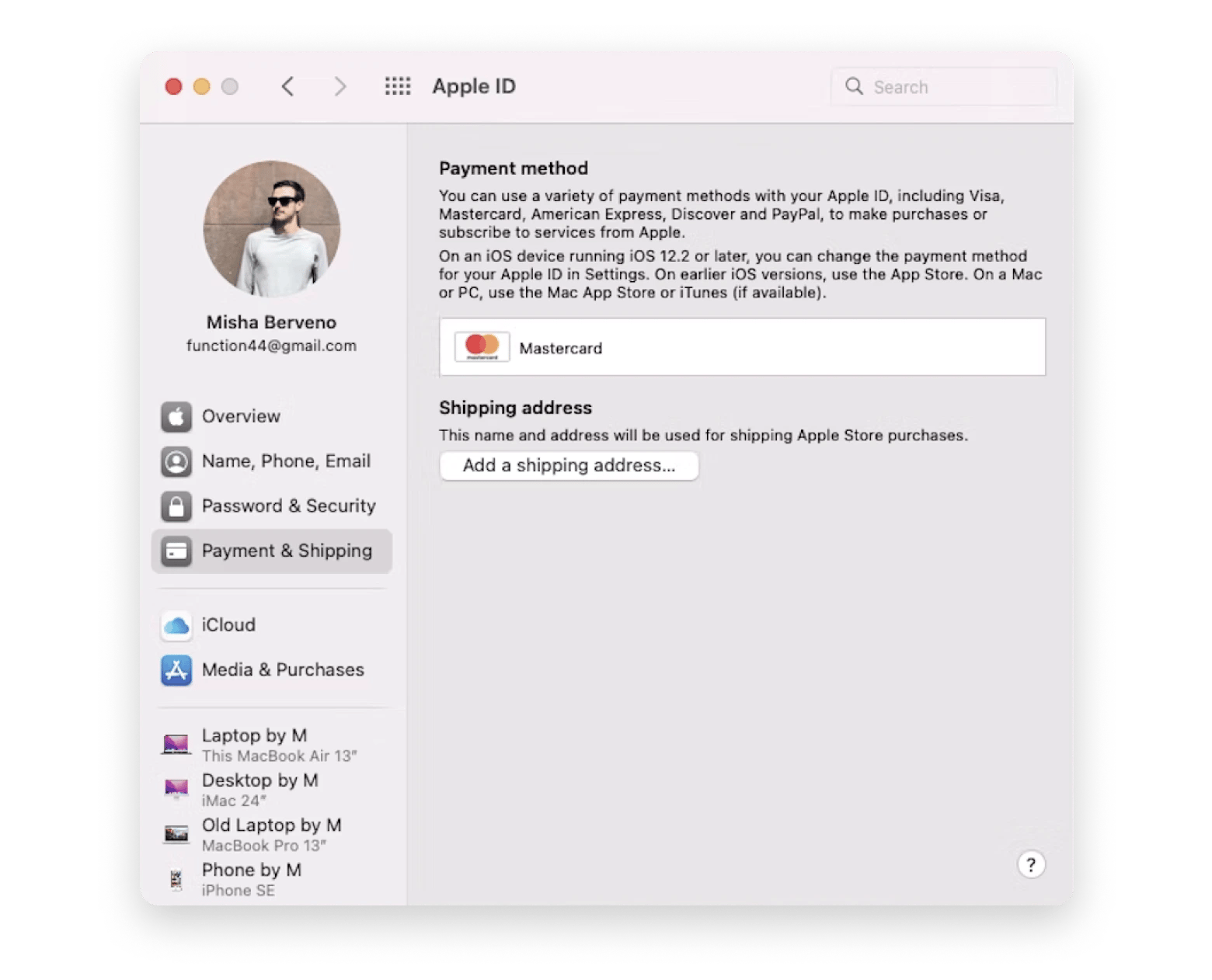
There is an unwanted apple.com bill charge in my account
There are a few ways to find out what was purchased:
- Check your email receipts. That should be the first and easiest step to solving the mystery. Apple sends a detailed invoice for every apple.com/bill charge on your account. Log into the email associated with your Apple ID and search by the date of the charge, the sender — Apple, or by simply typing the word "invoice."
- Call Apple's billing department. Their number goes with every Apple bill charge on your bank statement, and by the order ID they will be able to tell you what any apple.com bill charge is for.
- Go to reportaproblem.apple.com. It's Apple's website for problem resolution, but you can also check your purchase history section there. Simply sign in with your Apple ID and enter the amount of the charge you see on your bank statement into the Search box.
- Contact Apple Support. This can become your last resort if you are unable to locate an apple.com bill charge using the methods above.
Why is Apple taking money from my account?
According to reports from Sensor Tower, an average user spends about $21 per month on their subscriptions, and an additional $11 on apps. That's almost $400 of small charges per year that often go unnoticed.
For the next time you look at your bank statement and wonder about new Apple bills, here are all the cases when you might see Apple charges on your account:
- You've made a purchase using your Apple ID. Maybe you have just forgotten? This can often happen to pre-ordered items that haven't been fully charged yet. The amount on your bill can set you off as well, but it might be because Apple has grouped your purchases or you've paid for items partially using your Apple ID credit.
- Some subscriptions have escaped your memory. In other words, the apple.com/bill you are wondering about might be one of the monthly subscriptions. Maybe you've accidentally signed up for iCloud Storage or forgot to cancel Apple Music after the free trial?
- Your Family Sharing group member made a purchase. You will see charges from other members of the group if you are the Organizer. In this case, ask your family members if they can recognize the Apple bill in question. If you have young kids in the family, you might like to turn on the Ask to Buy feature to request permission before children can make purchases.
- Someone made a purchase using your Apple ID. This might be a person you willingly shared your password with, or a stranger who hacked into your account. You can protect yourself by creating a new, secure Apple ID password.
- Someone made a purchase using your card. Just like with the case above, if you suspect or discover that your card has been compromised, contact your bank to block the card and cancel any unwanted purchases. However, this should be your final strategy, after you've checked your account invoices and your Apple Store purchase history first.
Tip: If you can't find an app that you've purchased, it may be hidden on your iPhone. Learn how to find and open hidden apps on your iPhone.
How to check Apple Store purchase history on iPhone, iPad, and Mac
The first thing you'd want to do if you see unexpected charges from Apple is find out what you've bought. Checking Apple Store purchase history is quick, no matter what device you have on hand to do it.
How to check your App Store purchase history on an iPhone or iPad
- Open the Settings app.
- Tap your name, then tap Media & Purchases.
- Tap View Account. You might be asked to sign in.
- Tap Purchase History.
- Your purchase history will appear. If you're not sure what you were charged for, but you know the amount, search for the amount.
- If you want to see more purchases, tap Last 90 days at the top of your purchase history and choose another way to filter your purchases.
How to view Apple purchase history on a Mac
- Open the Music app on your Mac.
- From the Account menu at the top of the screen, choose Account Settings. You may be prompted to sign in.
- On the Account Information page, scroll down to Purchase History. Next to Recent Purchase, click See All.
- It may take a moment for your Apple billing history to appear. Click Select a Range. Or, choose Last 90 days, then set a date range.
Note: If you feel uneasy about downloading apps from the App Store, consider exploring other safe and trusted sources for getting the tools you need. Check out this article on how to download apps on Mac.
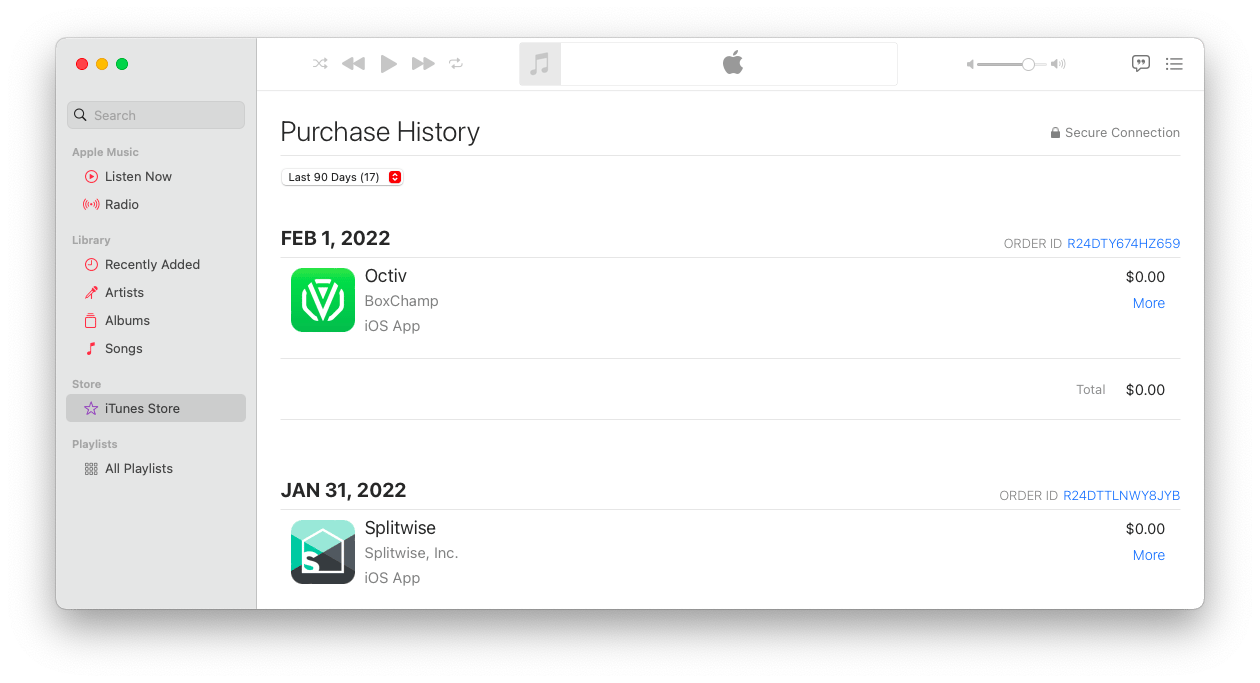
If you ever find Apple bill charges on your account for purchases you're sure you didn't make, it might mean your Apple ID has been hacked or your credit card details have been stolen. To protect yourself from this scenario, I recommend you create a strong password and keep your card details secure.
Secrets 4 is one of the best places to safely store your password information. It's definitely better than writing it down in a notebook, and easier than trying to remember a billion passwords for all your apps.
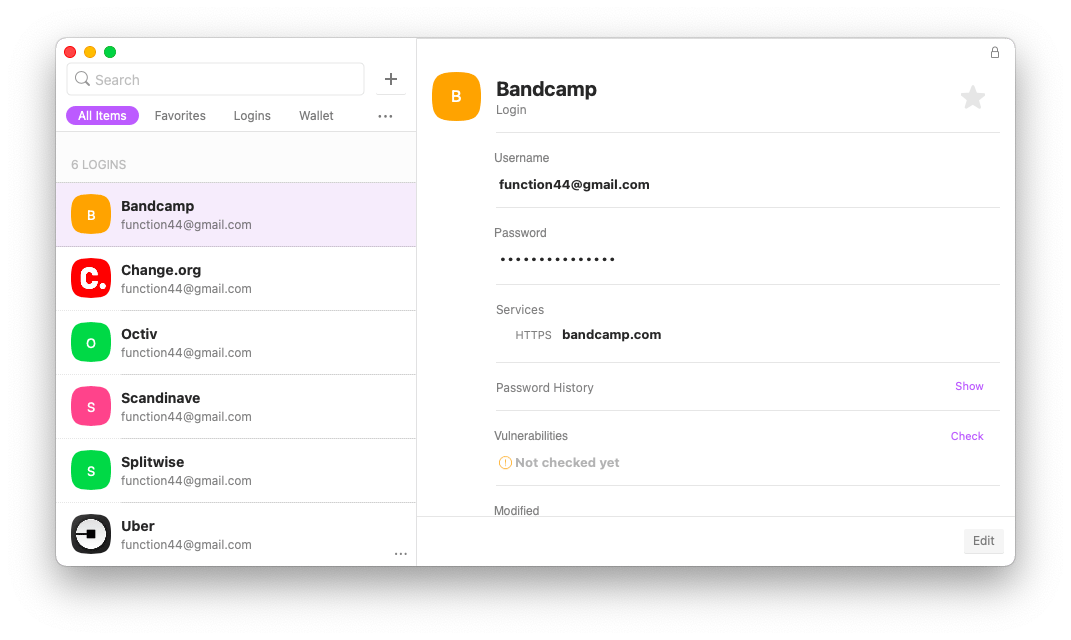
Think of Secrets 4 as a secure personal information vault that's intuitive in navigation, but impossible to hack. With industry-standard PGP encryption, this app will keep your existing accounts secure, while giving you access to them from anywhere in the world.
While on the topic of security and effectiveness, you can't forget about your network. Your internet can cause you problems not only by being slow, but by allowing others to access your data through an non-secure connection.
WiFi Explorer will help you fix your network problems better than any technician. With its range of extensive details about networks in the vicinity, the app gives out information about their connection quality and problems in seconds. Use WiFi Explorer to troubleshoot your own connections at home or in the office, and fix any network problems before they get in the way of your productivity.
Here is how you can quickly make sure your WiFi connection is secure and up to speed:
- Launch WiFi Explorer.
- Wait for the app to scan your wireless environment and generate a list of active networks.
- Use the Filter field at the top right to narrow down the networks on display.
- Click any network from the list and select Network Details.
- Go over to the Advanced Details tab and use expandable arrows for more information.
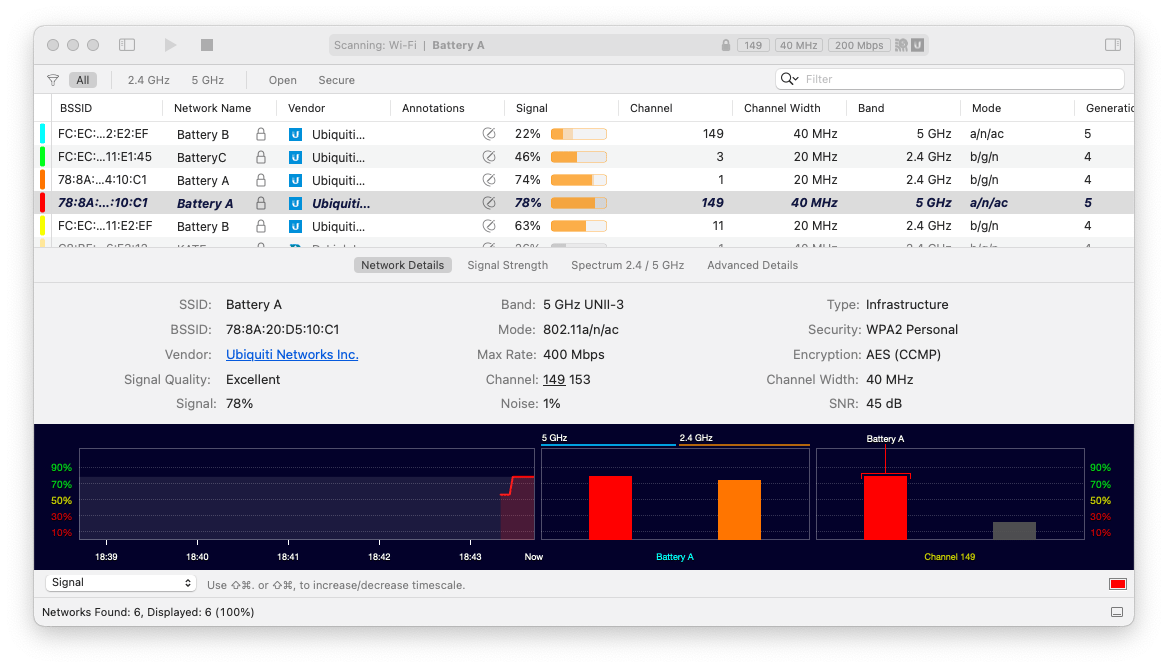
How to cancel unwanted Apple bill charges
Now that you've checked your Apple Store purchase history, you might find charges that you didn't authorize. You have a couple options in this case: head over to reportaproblem.apple.com to use Apple's resolution process, or contact your credit card company and deal with the charge through them.
Oftentimes, we tend to underestimate how much we pay for apps and subscriptions, until we actually sit down to calculate it. That's why most unexpected apple.com bill charges will turn out to be a monthly subscription that you've forgotten about or an app purchase that you just didn't plan into the budget.
I use MoneyWiz. It's not just a bill organizer, but a reliable online base for all your financial needs and information. The app makes it easy to accurately plan your budget with spending forecasts, as well as pay all your bills on time with a bill payment organizer and reminder. Its user-friendly interface with some amazing time-saving options makes it one of the best budget apps to date.
Here is how you can easily create an expense budget:
- Launch MoneyWiz and click on the Budget section ➙ New Budget.
- Select whether you'd like to create an Income or Expense budget.
- Fill out budget details in the window that appears.
- Wait for MoneyWiz to scan all transactions and add relevant ones to the new budget
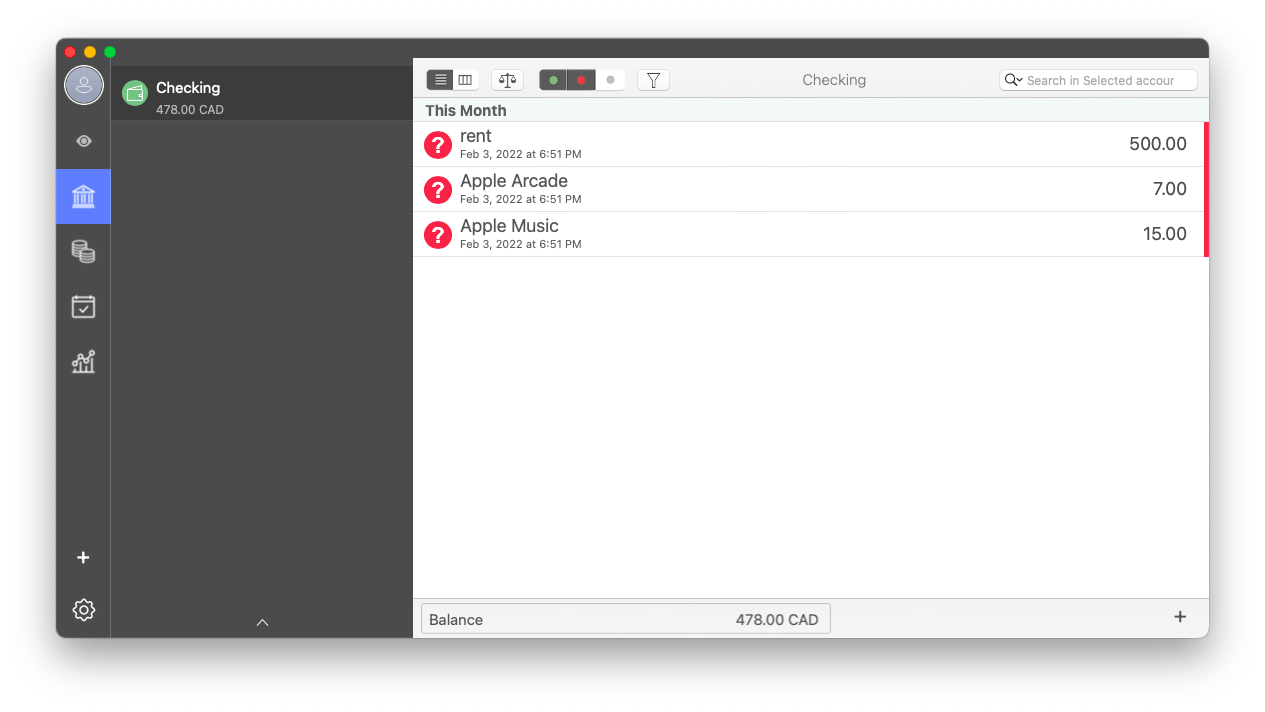
Check whether you are overpaying!Back in 2024, we at Setapp conducted a study that revealed something surprising: in just the previous month, 83% of Mac users had paid for software. That’s a huge number. Are you one of them? What’s even more interesting is that people tend to underestimate how much they actually spend. On average, users thought they were spending about $86 per month on software. But when they crunched the numbers, it turned out they were spending... $219! That’s totally fine — if you’re actually using all those tools and services. But… are you? Let’s take a look at some of the most common subscriptions people pay for. Use this list to check your own and cancel the ones you don’t really need:
|
In the more serious case of unexpected Apple bill charges turning out to be the consequence of fraud, you need to take action to protect your account. I've mentioned about changing your Apple ID password and contacting your bank, but there is more you can do.
Important!
You can protect yourself from hackers and other online criminals by setting up two-factor authentication on your accounts. Step Two is a security app that brings ease and beauty into a two-step verification process. You can quickly add a new account by scanning its two-step QR code. The app also comes with a Safari extension that autofills your verification codes for you, simplifying the sign-in process, while keeping your account secure.
Read more on multi-factor authentication.
Final thoughts
Now you're an expert on how to check your Apple Store purchase history and deal with any unwanted apple.com bill charges. It's a good time to protect your accounts further with the help of Secrets 4 and Step Two, get ahead on your budget planning with MoneyWiz, and up your network connection using WiFi Explorer.
Good news! All four apps – Secrets 4, Step Two, MoneyWiz and WiFi Explorer are available to you immediately and absolutely free through a seven-day trial of Setapp, a platform with more than 250 best-in-class macOS and iOS apps that can help make your life easier and solve any problem you can imagine. Try any Setapp app today and you'll never look back!
FAQ
How can I check my Apple subscriptions?
On your iPhone or iPad, go to Settings > Apple ID > Subscriptions. View and manage all active subscriptions.
On your Mac, go to Finder > Applications > App Store. Click on your name, and choose View Information, then scroll to Manage under Subscriptions. Additionally, use MoneyWiz 2025 to track and manage your subscriptions and expenses more effectively.
How do I see transactions on my Apple account?
On your iPhone or iPad, go to Settings > Apple ID > Media & Purchases > View Account > Purchase History.
On a Mac, go to Finder > Applications > App Store > Account Settings and check Purchase History for recent transactions. For a more detailed analysis of your finances, consider using MoneyWiz 2025 to track and categorize these transactions.
How do I talk to Apple about charges?
To discuss charges with Apple, sign in to reportaproblem.apple.com, review your purchase history, and report any issues. Alternatively, you can call Apple Support using the contact information provided with the charge on your bank statement or use the Apple Support app to connect with a representative.
How do I stop Apple from taking money from my account?
To stop Apple from taking money from your account, open the Settings app on your iPhone or iPad and tap Apple ID > Subscriptions > View all active subscriptions and cancel any that you no longer want.
On your Mac, launch the App Store > Click on your name at the bottom left > View Information > Manage. Cancel any active subscriptions there.
Additionally, if you find unauthorized charges, review your purchase history and use MoneyWiz 2025 to monitor and manage your spending. If necessary, contact Apple Support or your bank to address any fraudulent activity.

